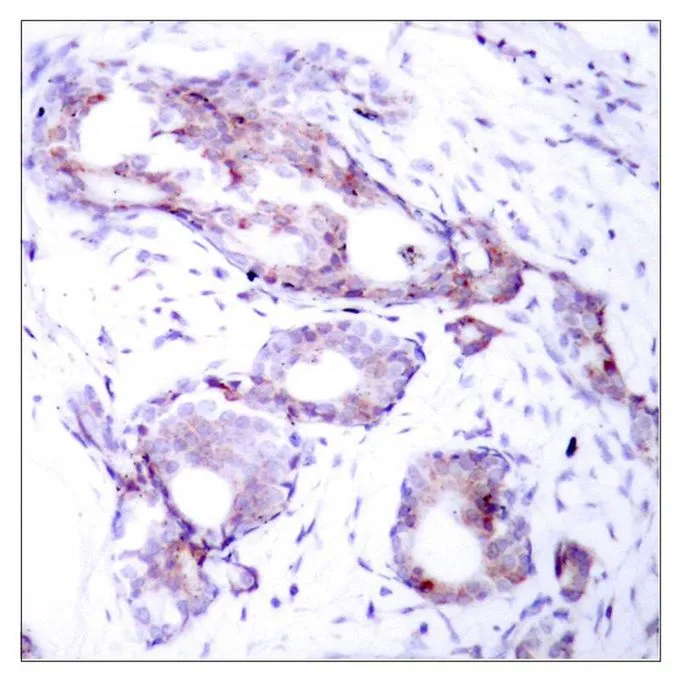![IHC-P analysis of human colon adenocarcinoma tissue using GTX04712 c-Myc antibody [9E10]. Antigen retrieval : Citrate Buffer pH 6.0 IHC-P analysis of human colon adenocarcinoma tissue using GTX04712 c-Myc antibody [9E10]. Antigen retrieval : Citrate Buffer pH 6.0](https://www.genetex.com/upload/website/prouct_img/normal/GTX04712/GTX04712_20240325_IHC-P_24032422_493.webp)
IHC-P analysis of human colon adenocarcinoma tissue using GTX04712 c-Myc antibody [9E10]. Antigen retrieval : Citrate Buffer pH 6.0
c-Myc antibody [9E10]
GTX04712
ApplicationsImmunoHistoChemistry, ImmunoHistoChemistry Paraffin
Product group Antibodies
TargetMYC
Overview
- SupplierGeneTex
- Product Namec-Myc antibody [9E10]
- Delivery Days Customer7
- Application Supplier NoteIHC-P: 1:50-1:200. *Optimal dilutions/concentrations should be determined by the researcher.Not tested in other applications.
- ApplicationsImmunoHistoChemistry, ImmunoHistoChemistry Paraffin
- CertificationResearch Use Only
- ClonalityMonoclonal
- ConjugateUnconjugated
- Gene ID4609
- Target nameMYC
- Target descriptionMYC proto-oncogene, bHLH transcription factor
- Target synonymsavian myelocytomatosis viral oncogene homolog; bHLHe39; class E basic helix-loop-helix protein 39; c-Myc; MRTL; myc proto-oncogene protein; MYCC; myc-related translation/localization regulatory factor; proto-oncogene c-Myc; transcription factor p64; v-myc avian myelocytomatosis viral oncogene homolog; v-myc myelocytomatosis viral oncogene homolog
- HostMouse
- IsotypeIgG1
- Protein IDP01106
- Protein NameMyc proto-oncogene protein
- Scientific DescriptionThis gene is a proto-oncogene and encodes a nuclear phosphoprotein that plays a role in cell cycle progression, apoptosis and cellular transformation. The encoded protein forms a heterodimer with the related transcription factor MAX. This complex binds to the E box DNA consensus sequence and regulates the transcription of specific target genes. Amplification of this gene is frequently observed in numerous human cancers. Translocations involving this gene are associated with Burkitt lymphoma and multiple myeloma in human patients. There is evidence to show that translation initiates both from an upstream, in-frame non-AUG (CUG) and a downstream AUG start site, resulting in the production of two isoforms with distinct N-termini. [provided by RefSeq, Aug 2017]
- Storage Instruction-20°C or -80°C,2°C to 8°C
- UNSPSC12352203

![IHC-P analysis of human cervical carcinoma tissue using GTX34611 c-Myc antibody [SPM237].](https://www.genetex.com/upload/website/prouct_img/normal/GTX34611/GTX34611_20200115_IHC-P_423_w_23060801_539.webp)

